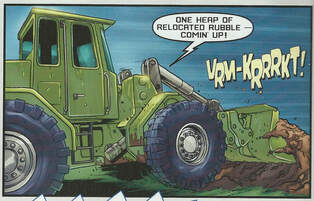
It's the debut of Stockade, plus a whole new Animated comic, in my look at Return to Cybertron Part 1!
| The Solar Pool |
|
 This week, only Cybertron can save Earth, but has someone already made a deal with the devil? It's the debut of Stockade, plus a whole new Animated comic, in my look at Return to Cybertron Part 1!
7 Comments
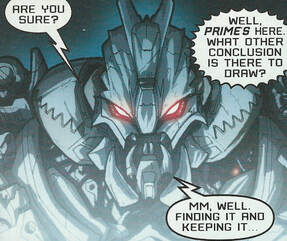 This week, it's looking forwards and back like two halves of Jazz flying away from one another. First up, my look at Dark Spark finds out what happens when someone comes back from the dead wrong. Then, it's the rubber duckey of Transformers shows as I discuss Beast Wars! 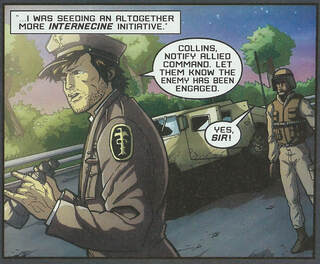 This week, it's the first appearance of some tiny friends from G1, a bolserting action scene and a clear sign of what a lot of people working on the franchise considered to be Megan Fox's personality. All this and the start of the FALL of the President of the USA, in my look at Aftermath Part 2! 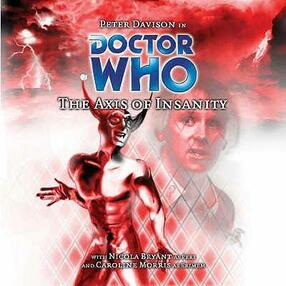 Doctor Who: Axis of Insanity. 2004. This is another in the series of KO-FI sponsored posts, this one by Charles Murphy, who has asked me to talk about the Simon Furman written Doctor Who audio. 2004 was an odd time for the Big Finish Who audios. The preceding anniversary year had been tremendously exciting, with all sorts of experimentation and format breaking across the range that made for one of the best regarded in the now 20 year history of their output. Not everything worked (hello Nekromanteia), but the run from Jubilee (later adapted into the Christopher Eccleston Dalek episode) to the rather damp squib of the official 40th anniversary story Zagreus is rarely less than interesting. For some reason though, almost immediately, 2004 became a rather poorly looked upon year. Partly because the return of the TV series was announced alongside the anniversary, perhaps taking some of the shine off the company for fans who had used it as a placebo. But the shift in actual quality is pretty sharp as well. Especially with so much of the year’s output being given over to the deeply unpopular Divergent Universe storyline. Which is perhaps a bit of a shame for Furman that this was the one time he wound up writing for them. Especially as his audio, about the Fifth Doctor and companions becoming trapped in an alternate dimension of realities cut off by the Time Lords came out right after the first Divergent Universe four story season, where the Eighth Doctor and companions became trapped in an alternate dimension of realities cut off by the Time Lords. Furman had of course written sporadically for the Doctor Who Magazine comic strip, but had never gotten his feet under the table enough to create a sense that he was a natural fit for the franchise. He’d also, for all his experience as a writer and script editor, had worked exclusively in visual media, and audio requires a different set of mental disciplines. So unfortunately Axis of Insanity feels like he didn’t have much help from script editor Gary Russell on adapting to a different style. This is most apparent from the fact Furman clearly didn’t know (despite claiming at the time in the DWM puff piece that Davison had been a childhood—hmm—favourite) didn’t have a sonic screwdriver and repeatedly wrote him as using one, with the one bit of editing done to simply rename the handy Swiss army knife with sonic powers he uses. There’s also the problem that the central conceit—an insane collapsing reality full of surreal imagery not unlike the sort of thing the end of ReGeneration One would try for—is a great one for a comic, but not a great one for audio. The pictures may in theory be better on radio, but only if you have the right words, and here you have characters literally saying to people standing next to them “Tell me what you see”, and getting an awkward description that sounds like Alan Partridge trying to sell Monkey Tennis in response. Because it’s easy to forget 2004 is a long time ago now, it was actually kind of a shock to revisit this for the first time in years and find how outdated a lot of the Big Finish format that was outside of Furman`s control now seems. In particular, aping the format and pacing of a 1970’s children’s show with four 25 minute episodes just a year before RTD showed you could do the same thing in 45 minutes makes it feel very creaky. The first episode especially spends a long time building up to the Jester character revealing they’re the villain who has taken over this hub controlling defunct timelines, something which is incredibly obvious from the first few minutes. There’s also the issue of Erimem, the Doctor’s created by Big Finish Egyptian companion. Who is played by a white actress, with various cheats on the covers that featured her around this time verging on brown facing her. Not only that, she was consistently written as the most white British character possible, with a posh RP accent and refusal to use contractions (why is that the default when trying to write the “Other” in SF anyway?), making her occasional talk of being a vicious warrior queen seem entirely random. It’s a character that never really worked, and who does rather drag the whole thing down. TV regulars Peter Davison and Nicola Bryant do better with their roles, with Peri particularly getting to be a nice strong effectively entirely new character in comparison to her usual portrayal on-screen. For all the bells and whistles of the core idea, the story is entirely based around the guest performance of the Jester character. Who is almost literally written to be the Jack Nicholson Joker, a larger than life insane and unpredictable force of nature who warps the world around him. Unfortunately they don’t have Jack Nicholson. They have Biggs Darklighter from Star Wars. Garrick Hagon is a reliably solid actor, but there’s a reason he’s most famous for nearly entirely being cut out of a film and all the attempts at witty wordplay somewhat fall flat and become annoying rather than entertaining. It’s something of a relief this turns out to be a false persona and they revert to a female, less OTT form for the last episode, even if (in another sign of how 2004 was a long time ago) the other characters struggle with pronouns in a way that would hopefully not be the case today. The constraints of the cast size (and that, unlike his successor Nick Briggs, Garry Russell was not as keen on doubling up) means the rest of this intended insane upside down world is represented by a character who only exists to sacrifice themselves for the Doctor right at the end and a couple of extras. Again, making it hard to sell the scale. All of which makes it sound rather awful. But it rattles along in an amiable enough way and could best be described as forgettable, but harmless. And the inherent issues are not really those of the author, but just the bad luck of when it was made. A year earlier, or a couple later, and Furman might have been better guided into this new field and had chance to do something a bit more interesting. Which leaves the puzzle of why this was Furman’s only Who audio. It might not have been a great start, but he has all the hallmarks a company that relies on a small pool of regular writers looks for of being fast, reliable and someone who can generally be left to their own devices once they’ve been given a brief. I suspect it’s simply that writing for a larger scale of production than a comic is a lot of hard work, and Big Finish famously don’t pay very well (and, unlike a lot of scripted drama, pay a one-off flat fee, no royalties). For an experienced TV writer and editor, it probably wasn’t worth the hassle of pursuing future opportunities. Leaving this as one odd little curio in his career that rather leaves you assuming that, no, he never really did get the hang of writing Doctor Who. 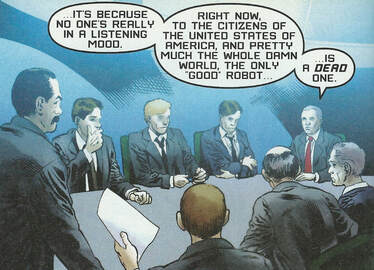 This week, meet the new leader of America, who I'm sure will not fall from grace, and see what happens when winning is nearly as bad as losing. All this and Starscream talking to himself at length in my look at AFTERMATH PART 1! Plus more Beast Wars and G1! |
AuthorStuart Webb. Who knows everything about nothing and not a lot about that. Archives
July 2024
Categories
All
|